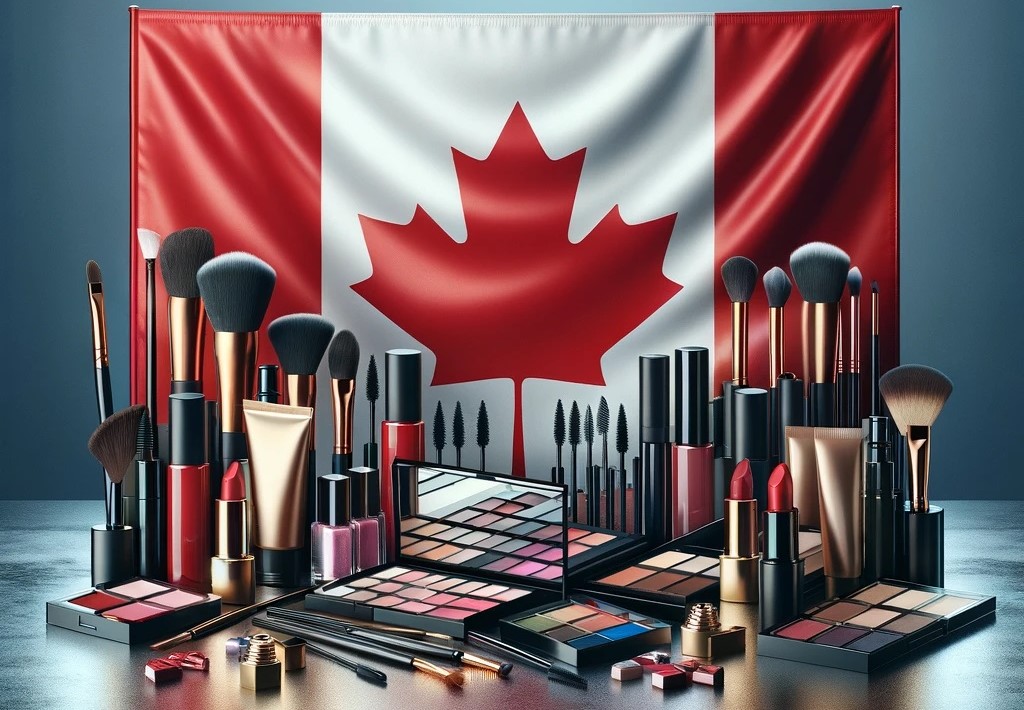Your Canada FDA cosmetics regulatory assistance.

Cosmetics sold in Canada are regulated by Health Canada, which monitors production and distribution in several sectors. Cosmetic products placed on the Canadian market must comply with the Food and Drugs Act, with the Cosmetic Regulation as well as the Consumer Packaging and Labelling Act.
More About Us
What type of products are cosmetics?
The Food and Drugs Act provides a definition of a cosmetic product in Canada. Cosmetic products include “any substance or mixture of substances, manufactured, sold or represented for use in cleansing, improving or altering the complexion, skin, hair or teeth and includes deodorants and perfumes”. This includes cosmetics used by professional aesthetic services, bulk-bought institutional products (for example, hand soap in schools) and handmade cosmetics sold at craft sales or from home-based businesses.
As in most countries, the classification of the product can often depend on the claims made about its performance and function.


Safety requirements
The most important requirement is that cosmetic products sold in Canada are manufactured, prepared, preserved, packed and stored under sanitary conditions and are, therefore, safe for use by the consumers.
When used as intended, a cosmetic product must not pose a risk to consumers. The safety of the product must be determined but the legislation does not specifically prescribe how the safety of the product is proven and demonstrated; that is the responsibility of the product manufacturer.
serviced
1000+
companies
notified
7000+
products
clients from
38+
countries
Ingredient hotlist
Health Canada maintains quite an extensive list of ingredients that cosmetic products should not contain, can contain only up to a certain maximum concentration or can contain under certain conditions along with the warnings that have to be displayed about the use of such ingredients. This list is referred to as the Cosmetic Ingredient Hotlist. However, this list contains only ingredients used intentionally, it does not include unintentional ingredients.
Cosmetic product labels must conform to the specific requirements for labelling that can be found in the Food and Drugs Act, the Cosmetic Regulation, Consumer Packaging and Labelling Act and the Hazardous Product Act. Special attention must be paid to the language used on the labels as in most cases at least some parts of the label also have to be written in French.
The hotlist is a science-based administrative tool that is updated whenever new scientific data becomes available. CE.way has access to the list, so we can check ingredient compliance for your products.
CNF submission
According to Canadian Cosmetic Regulations, all cosmetic products that are sold in Canada, must be notified to Health Canada.
There is no pre-market registration for cosmetics that would lead to an official approval for sales, but all cosmetic product placed on the Canadian market, whether manufactured in Canada or abroad, have to be notified to Health Canada within 10 days after they’re first placed on the market. Failure to do so may result in a product being denied entry into Canada or removed from sale.
The notification is made by filling in the Cosmetic Notification Form (CNF) online. This can be done by the manufacturer, Canadian importer or a notifier who acts on behalf of a manufacturer or Canadian importer.
Cosmetic product notification does not mean that the product is approved by Health Canada and that it complies with all legal requirements. Manufacturer is responsible for product safety and has to ensure that the product complies with the relevant regulation. However, in case there are any concerns with the submitted CNF, Health Canada will inform the notifier. Failure to respond may lead to a compliance action.
Information that has to be provided to Health Canada through Cosmetic product notification form includes product identity, product function, product formulation, the name and contact details of the manufacturer/importer/distributor, date of first sale in Canada and, if needed, any additional documents and pictures.
It is important to update the cosmetic notification form whenever the information, such as product formulation, product name, contact details of the notifier etc., that was provided on the CNF, changes.
Canadian responsible person / representative
As of October 9, 2024, Health Canada mandates that all foreign cosmetic manufacturers appoint a Canadian-based representative or Canadian cosmetics responsible person. This representative acts as the primary liaison with Health Canada, ensuring compliance with the Food and Drugs Act and Cosmetic Regulations. Their responsibilities include submitting the Cosmetic Notification Form (CNF) within 10 days of a product's first sale in Canada, ensuring products meet safety standards, and addressing any compliance issues or safety concerns that may arise. This update aligns with international standards, emphasizing consumer safety and product accountability.
CE.way MoCRA services
Formula review
Learn more
Labelling review
Learn more
Product listing
Learn more
Facility registration
Learn more
Product safety substantiation
Learn more
Safety & efficiacy testing
Learn more
How can CE.WAY help
Complete Regulatory Compliance Support
Product Classicifation & Formulation Compliance Review
Compliance with the Cosmetic Ingredient Hotlist
Toxicological Risk Assessments (TRAs) / Safety assessments
Clinical Studies for Claim Substantiation
-
Product Labelling Review and Support (PDP)
Cosmetic Notification Form Preparation & Submission
Administrative/Regulatory Support
Dossier Submission and Stewardship
Label translation to French
Act as the Canadian responsible person / representativeh


